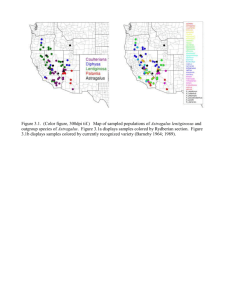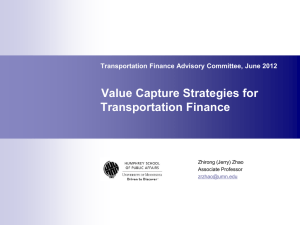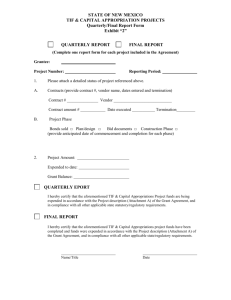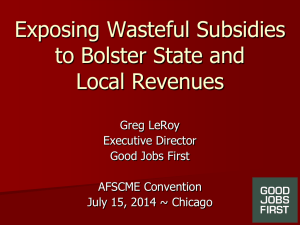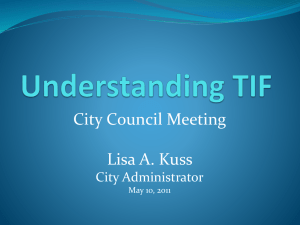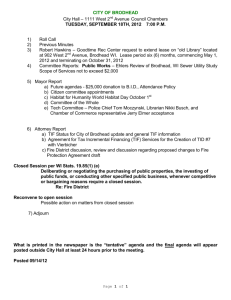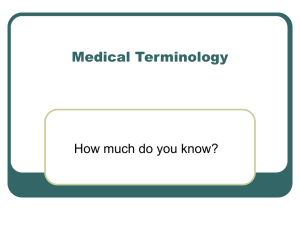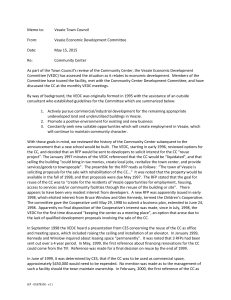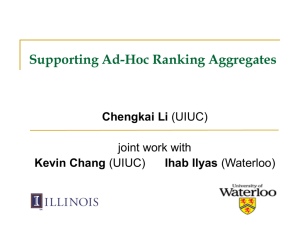TIF FUNDAMENTALS for TOWNS
advertisement
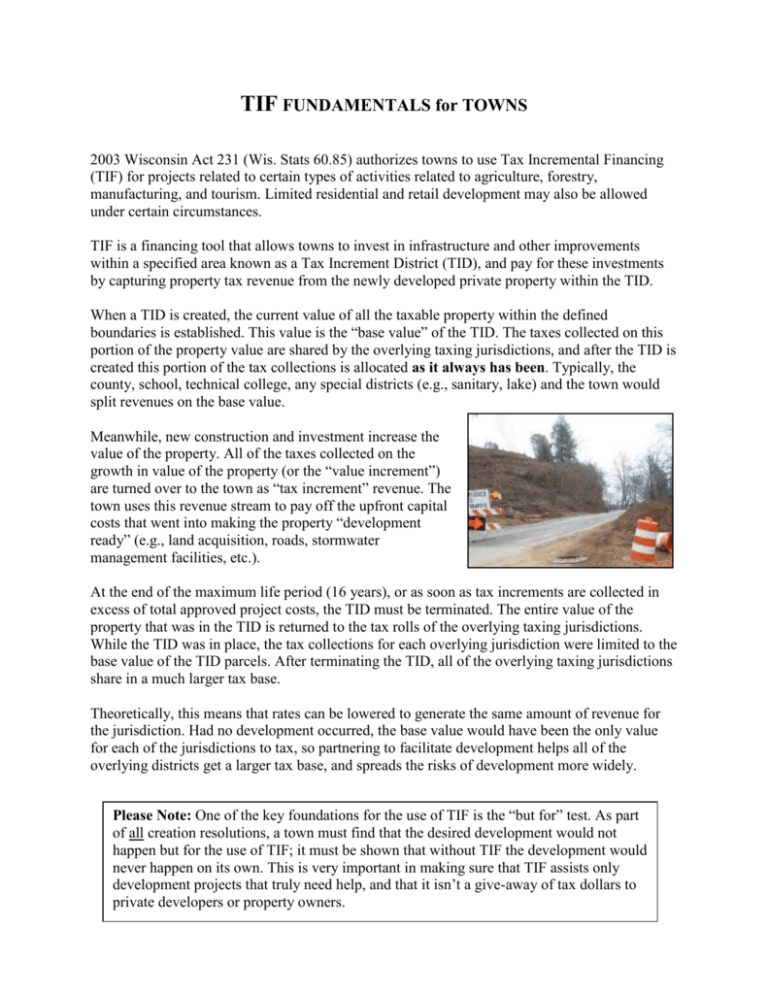
TIF FUNDAMENTALS for TOWNS 2003 Wisconsin Act 231 (Wis. Stats 60.85) authorizes towns to use Tax Incremental Financing (TIF) for projects related to certain types of activities related to agriculture, forestry, manufacturing, and tourism. Limited residential and retail development may also be allowed under certain circumstances. TIF is a financing tool that allows towns to invest in infrastructure and other improvements within a specified area known as a Tax Increment District (TID), and pay for these investments by capturing property tax revenue from the newly developed private property within the TID. When a TID is created, the current value of all the taxable property within the defined boundaries is established. This value is the “base value” of the TID. The taxes collected on this portion of the property value are shared by the overlying taxing jurisdictions, and after the TID is created this portion of the tax collections is allocated as it always has been. Typically, the county, school, technical college, any special districts (e.g., sanitary, lake) and the town would split revenues on the base value. Meanwhile, new construction and investment increase the value of the property. All of the taxes collected on the growth in value of the property (or the “value increment”) are turned over to the town as “tax increment” revenue. The town uses this revenue stream to pay off the upfront capital costs that went into making the property “development ready” (e.g., land acquisition, roads, stormwater management facilities, etc.). At the end of the maximum life period (16 years), or as soon as tax increments are collected in excess of total approved project costs, the TID must be terminated. The entire value of the property that was in the TID is returned to the tax rolls of the overlying taxing jurisdictions. While the TID was in place, the tax collections for each overlying jurisdiction were limited to the base value of the TID parcels. After terminating the TID, all of the overlying taxing jurisdictions share in a much larger tax base. Theoretically, this means that rates can be lowered to generate the same amount of revenue for the jurisdiction. Had no development occurred, the base value would have been the only value for each of the jurisdictions to tax, so partnering to facilitate development helps all of the overlying districts get a larger tax base, and spreads the risks of development more widely. Please Note: One of the key foundations for the use of TIF is the “but for” test. As part of all creation resolutions, a town must find that the desired development would not happen but for the use of TIF; it must be shown that without TIF the development would never happen on its own. This is very important in making sure that TIF assists only development projects that truly need help, and that it isn’t a give-away of tax dollars to private developers or property owners. Types of costs that may be incurred to support eligible activities include: Capital costs, such as roads, sewer, water, wastewater treatment, etc. Financing costs such as interest charges and loan origination fees Real property assembly costs for acquisition of land and easements Professional services costs (engineers, planners, attorneys, financial advisors) Imputed administrative costs for time spent administering the TIF district Organizational costs incurred to form the TIF district Discretionary payments necessary to carry out the purpose of the TIF district Removal or containment of lead contamination from buildings and infrastructure Fees imposed by the Department of Revenue related to administering TIF districts The following costs are not allowed to be paid by a town TIF district: Costs of constructing or expanding public buildings Costs of constructing or expanding facilities generally financed only with utility user fees General government operating expenses not associated with planning or implementing a TIF district Cash grants to owners, lessees, or developers of land within the TID As of January 2010, there were only two towns that had TIDs. They were the Town of Brockway (Jackson County near Black River Falls), created in 2008, and the Town of Weyauwega (Waupaca County), created in 2005. The TID in Weyauwega was created to fund road improvements necessary to accommodate the heavy truck and tractor traffic associated with Quantum Dairy, a new facility designed for 2,900 cows. The pre-existing roads were not built to withstand the traffic demands of the new dairy. The bulk of the administrative work associated with creating the Weyauwega TID was carried out by the Waupaca County Economic Development Director. The WDOR has no information on the performance of these two TIDs. Sources: Wisconsin Tax Incremental Finance Manual, WDOR, revised September 2005; “Town TIF - A New Tool for Rural Development,” by Gary Becker, Vierbicher Associates, Inc.; Michael Koles, UW-Extension Waupaca County; and Mary Lou Clayton, Community Services Specialist, Wisconsin Department of Revenue. Compiled by Kevin Struck, UW-Extension, January 2010.
